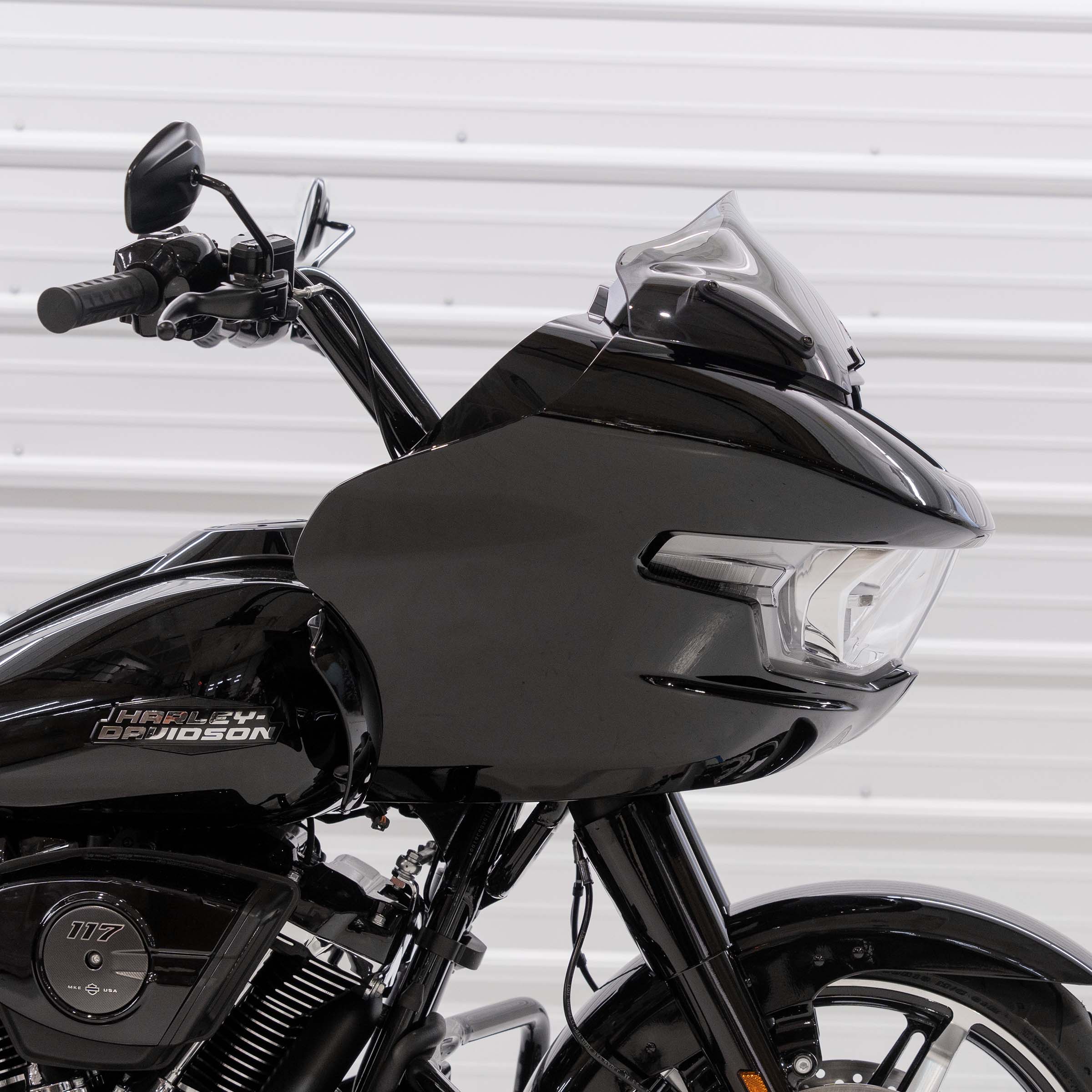Understanding the Importance of the Motorcycle Windshield Angle
The motorcycle windshield angle is one of the most critical factors affecting a rider’s comfort, aerodynamics, and protection against wind. A properly adjusted windshield not only improves wind deflection but also enhances riding stability and reduces fatigue. Many riders overlook how much of a difference a few degrees in the motorcycle windshield angle can make. Whether you’re touring long distances or commuting daily, getting the angle right can transform your entire riding experience.
What Is the Ideal Motorcycle Windshield Angle?
The ideal motorcycle windshield angle depends on your riding position, bike type, and personal preferences. In general, most experts recommend setting the windshield at an angle between 50 and 60 degrees relative to the ground. This angle allows wind to flow smoothly over the windshield and the rider’s helmet, reducing turbulence. However, there is no universal setting, as different riders have different body heights and postures. Adjusting the motorcycle windshield angle requires experimentation to find the sweet spot that minimizes buffeting while maintaining visibility and comfort.
Factors That Influence the Motorcycle Windshield Angle
Several factors can affect the optimal motorcycle windshield angle for your bike. First, rider height plays a major role. Taller riders may need a steeper windshield angle to direct airflow over their helmets. Second, bike design influences how wind hits your body. Cruiser-style bikes with upright seating may require a more vertical motorcycle windshield angle, while sport-touring models benefit from a more slanted setup. Third, helmet shape and type can also affect airflow patterns. Understanding these variables helps you fine-tune the motorcycle windshield angle for maximum comfort.
How to Adjust the Motorcycle Windshield Angle
Adjusting the motorcycle windshield angle is usually straightforward. Most modern motorcycles come with adjustable windshields that can be tilted or raised using simple levers or screws. Start by loosening the adjustment knobs and gradually tilting the windshield forward or backward. Ride a short distance to test how the wind feels on your face and chest. If you experience excessive buffeting or noise, the motorcycle windshield angle may be too upright. If airflow hits your shoulders or causes instability, it may be too flat. Keep refining the angle until you find the ideal position that balances protection and visibility.
The Science Behind the Perfect Motorcycle Windshield Angle
The motorcycle windshield angle affects aerodynamics and airflow dynamics around the bike and rider. A properly angled windshield creates a laminar airflow pattern that directs wind smoothly over the rider’s body. When the motorcycle windshield angle is too steep, turbulent air forms behind the screen, creating buffeting and noise. When it’s too flat, wind pressure hits the upper chest and helmet directly, causing discomfort and fatigue. Understanding the physics behind air deflection can help you adjust your motorcycle windshield angle more effectively for your specific riding conditions.
Benefits of Optimizing the Motorcycle Windshield Angle
Optimizing your motorcycle windshield angle offers multiple benefits. The most obvious advantage is improved wind protection, reducing fatigue on long rides. It also enhances riding stability by minimizing turbulence and drag. A correctly adjusted motorcycle windshield angle improves visibility by channeling airflow away from your face shield or goggles, preventing bugs and debris from hitting your helmet. Additionally, you’ll enjoy a quieter and more comfortable ride, allowing you to focus better on the road.
Common Mistakes When Setting the Motorcycle Windshield Angle
Many riders make common mistakes when setting their motorcycle windshield angle. One major error is assuming that the highest or steepest position provides the best protection. In reality, too steep an angle can create a vacuum effect behind the shield, resulting in noisy buffeting. Another mistake is ignoring rider posture. If you lean forward frequently, a more aerodynamic motorcycle windshield angle may be required. Also, some riders fail to test adjustments in real riding conditions. Always evaluate how your chosen motorcycle windshield angle performs at various speeds before finalizing the setup.
Motorcycle Windshield Angle for Different Bike Types
Different motorcycle types require different motorcycle windshield angle configurations. For touring motorcycles, a higher and more vertical angle offers excellent wind protection during long-distance travel. Adventure bikes benefit from an adjustable motorcycle windshield angle that can be modified for off-road and highway conditions. Sportbikes, with their aggressive riding posture, typically perform best with a lower, more aerodynamic windshield angle. Cruisers, on the other hand, need a balanced motorcycle windshield angle that complements their upright seating position.
Tools and Accessories to Help Adjust the Motorcycle Windshield Angle
Modern bikes often include adjustable mounts to fine-tune the motorcycle windshield angle. However, if your bike doesn’t, aftermarket kits are available. These kits include brackets and mounts that allow precise angle control. Some even feature quick-release systems to make on-the-go adjustments easier. Investing in these accessories ensures your motorcycle windshield angle can be easily optimized for different terrains and weather conditions.
Testing and Fine-Tuning Your Motorcycle Windshield Angle
Finding the best motorcycle windshield angle involves testing under real-world conditions. Take note of how the wind feels on your chest, helmet, and shoulders at different speeds. If you ride frequently in windy areas, you may need a slightly steeper motorcycle windshield angle. Record your adjustments and observe the impact on comfort and stability. Small changes can have a significant effect. Keep refining until your motorcycle windshield angle feels natural and provides maximum wind protection.
Conclusion: Mastering the Motorcycle Windshield Angle for the Best Ride
Perfecting your motorcycle windshield angle is key to achieving maximum wind protection and ride comfort. With the right setup, you can enjoy smoother airflow, reduced fatigue, and enhanced control. Every rider and bike combination is unique, so experimentation is essential. Pay attention to how adjustments affect airflow, and make incremental changes until you find the perfect balance. Once you’ve optimized your motorcycle windshield angle, your rides will become quieter, more stable, and significantly more enjoyable—proving that even a small adjustment can make a big difference in your riding experience.











Leave a Reply